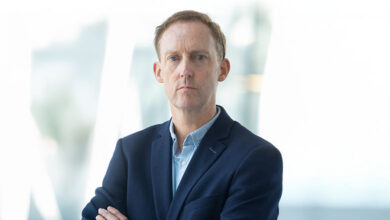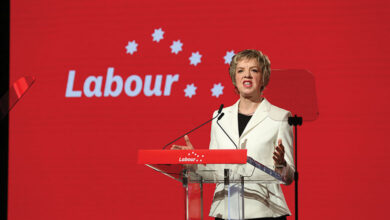Gaeilge le Grá: A major review of how we are teaching the Irish language

I recently held my first all-Irish event in the European Parliament in Brussels, in conjunction with Conradh na Gaeilge. I was heartened by the amount of young people who attended the event and are learning Irish all over again. I was proud to hear Irish being spoken in the European Parliament, writes Fianna Fáil MEP Cynthia Ní Mhurchú.
The overwhelming feedback I got from young people on that evening is that the way they learned Irish in school was not conducive to becoming fluent in Irish and using Irish on a daily basis. They felt it was all stick with no carrot dangled in front of them to encourage them to make Irish a part of their daily life.
They learned through the repetition of verbs, grammar and poetry. They were not afforded an opportunity to develop an interest in Irish. Many of them felt that, at the time, they could not relate to the importance of the language. In fact, they rebelled against it.
Make Irish relatable
The film ‘Kneecap’ has done more for encouraging young Irish people to learn Irish than 50 years of classroom-based learning. It framed the language in a manner that young people could understand and made it fashionable, relatable, and on trend.
The film demonstrated the power of the arts to be a vehicle within which to teach and encourage Irish language fluency. We need to start thinking outside the box to develop new ways to make learning Irish fashionable, attractive and cool again.
I recently contacted officials in the Creative Europe fund, a €1.84 billion EU fund used to promote culture across the EU, to investigate whether 10 Irish language music studios and rehearsal rooms could be funded across Ireland. The new studios would seek to capitalise on the shot in the arm that ‘Kneecap’ has given to the Irish language of late. They would be available to young people in a particular location to record and produce music, poetry and videos exclusively in Irish.
It does not matter whether the young person learning Irish is composing hip hop tracks, beat boxing, rapping or singing pop songs, as long as they are using Irish in the process. The Irish language has to be relevant to young people and has to meet them where they are in their lives.
I am sure Peig would understand that young Irish people may prefer to be emulating the Beastie Boys, Kneecap, or Jay-Z, as long as they are learning Irish in the process.
Broadcasters have a role to play in promoting Irish and that should be teased out more in any public funding that is allocated to them. TG4 has excelled at producing excellent programming aimed at a young audience, including Paisean Faisean. Of late, Virgin media has produced Grá ar an Trá, a bilingual dating show hosted by Gráinne Seoige. These are far more effective ways of generating an interest in the Irish language.
A second-class language in the European Parliament
Irish was a treaty language when Ireland became a member state in 1973, which meant that only EU treaties were translated into Irish. The Government applied in 2005 for Irish to become an official and working language and it was granted this status on 1 January 2007. Due to the shortage of translation staff and Irish language technological resources at the time, the scope of the status was derogated and the number of documents to be translated into Irish were limited.
“The film ‘Kneecap’ has done more for encouraging young Irish people to learn Irish than 50 years of classroom-based learning.” Cynthia Ní Mhurchú MEP, Fianna Fáil
I am currently fighting to ensure that Irish becomes a full working language in the institutions of the European Union. I do not know why we have tolerated our national language being sidelined at the top tiers of the European institutions for this long and I am critical of the Irish speaking MEPs who have sat in the European Parliament for years and done nothing about it.
I have no intention of letting this derogation continue under my watch. I am calling for an immediate end to a rule which sidelines our national language in the EU institutions in Brussels. We also need to ensure the removal of any barriers to employing interpreters with Irish. If we are serious about preserving our culture, our heritage and our national language that our ancestors spoke in every day, then we need to start in Brussels and end the sidelining of the Irish language.
There are people across Ireland who are promoting the use of the Irish language on a daily basis and they should be supported and encouraged. Gaeilge le Grá is an online Irish language course, the brainchild of Gráinne Ní Mhórdha in Thurles, that will teach you Irish in a practical, easy and enjoyable way. Gráinne is one of many young people that are leading a revival of the Irish language. We must get behind them and provide every support that we can.
A slow death
According to a recent Census, only 74,000 Irish people speak Irish on a daily basis. That is less than 2 per cent of the population. When a language dies, the traditions, heritage and culture of it dies too. Ireland needs to be careful that we do not become some bland mid Atlantic culture-less society that has abandoned our heritage.
We know that the constant reciting of verbs over and over again, and memorising conversations in Irish will not encourage young people to speak the language on daily basis. We know that in order to develop fluency, we have to spark an interest in Irish and meet young people in their own sphere of interest.
According to University of Mainz Professor Anneli Sarhimaa, almost half of the world’s languages will have died out in the next century. Let’s work together to ensure that Irish is not on that list. The time for change is now.





